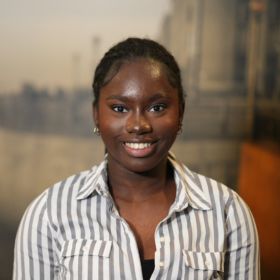Over a couple of weeks ago, I completed my placement year at the University of Oxford, and as I sit down to reflect, I am filled with a deep sense of accomplishment and gratitude. The personal and academic growth I have achieved is something I fully credit to the wonderful and kind people in my lab.
Working in a molecular neurodegeneration lab that researches treatments for Parkinson’s and Alzheimer’s has been a profound experience. One of the highlights of my year was helping in the Alzheimer’s Research UK (ARUK) day. On this day, donors came to visit our lab and see first-hand what their generous monetary contributions allowed in terms of research progression. This was a truly wholesome event because I understood the importance of bridging the gap between science and the public. Seeing the genuine interest and appreciation from the donors was a powerful reminder of why we do what we do – I am not a fully-fledged research scientist (yet!) but I see why people take it upon themselves to go out there and pursue a career in this field because the impact their work has for those affected by dementia is honestly rewarding.
Another memorable experience was attending an EDI networking event entitled “Celebrating Diversity in Science and Medicine”. Now, while I appreciate this event wasn’t heavily focused on dementia research, it offered a unique perspective and was a source of immense inspiration. This event showcased an exhibition called “Portraits of Black Female Scientists” – a beautiful display from Cambridge Black Medical Scientific Network (BMSN). This exhibition was nothing short of empowering. As a young black aspiring scientist, it was really comforting to see the success of women like me in a similar field.
I remember one of the guest speakers, Laura Eghobamien, founder of the BMSN, talking about how one of the reasons why she thinks that there is not a lot of black people in science is because they don’t see themselves as often as their white counterparts in the media or in advertisement regarding scientific research. This is why they felt the need to create a beautiful work of art whereby the achievements of black women in STEM were showcased. Being told that representation and diversity are important is one thing, but actually seeing the importance of it, whether in real life or in pictures, is another. This highlighted the need for representation in the scientific community and after seeing that inspiring display, I am more determined than ever to pursue a career in research. And I truly hope others out there, who have interests in science or medicine, are equally inspired.
Throughout this year, I have learned valuable lessons that extend beyond the lab bench. I have seen the importance of communication in science – how explaining the research that we do to the public can foster a deeper understanding of the significance of the work that is done. It also helped me to figure out how to transition from technical terms to layman terms so it’s easier for non-scientists to understand – something my friends have been bugging me about to do!
Reflecting on this placement year, I am truly grateful for the opportunity I have had. The journey has been challenging, no doubt about that, but every moment has been worth it. From the long hours in the lab to the helpful conversations I’ve had with my colleagues and supervisors regarding post-graduate life, each experience has contributed to my growth as a researcher and a person. I am very excited to see what the final year of university has in store for me. My subsequent blog entries will follow my journey as a final year undergraduate – applying for PhD studentships, research assistant roles, juggling work and exams. So, stay tuned for more and wish me luck!

Yasmin Bonsu
Author
Yasmin Bonsu is an an undergraduate student from the University of Manchester currently undertaking a placement year in the Carlyle Lab at Oxford University. Yasmin is investigating the activity of proteoforms of the granin family in cortical neurons insulted with oligomerised amyloid beta. Her goal is to finish her placement year, earn her bachelor’s degree in neuroscience, and then pursue a PhD in clinical neuroscience. Through Yasmin’s blogs we’ll gain insights on life as an undergraduate, and hopefully inspire others to pursue a career in dementia research.

 Print This Post
Print This Post